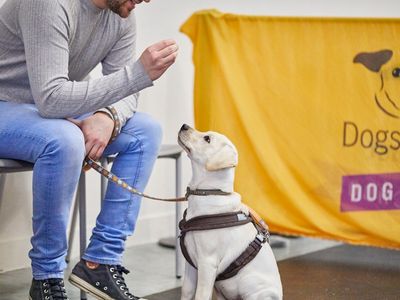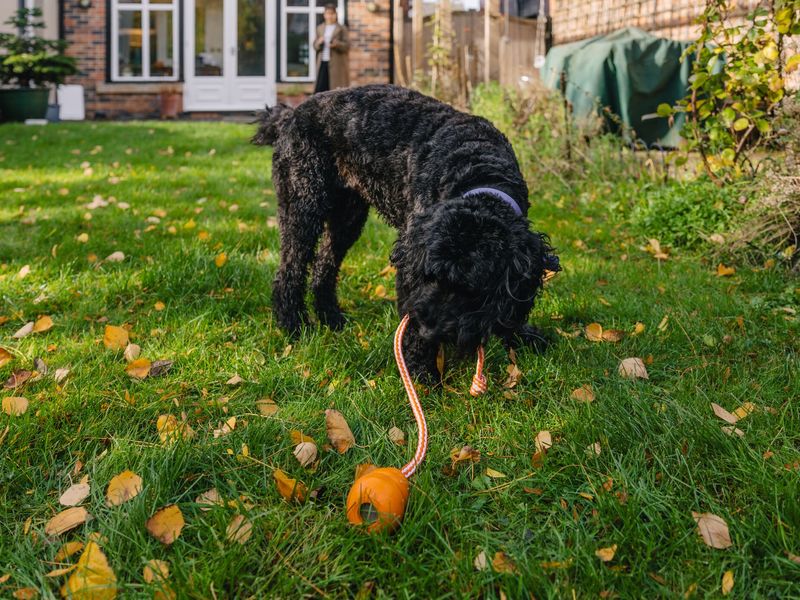
How to stop your dog from stealing
Tired of your slippers going missing? Here’s how to persuade your pooch that fun comes in other forms

Do socks, remote controls or your children’s teddies go missing at home – only to appear later in your dog’s bed or around the house? Or maybe your dog likes to pick them up and start a game of chase?
If this sounds familiar then don’t worry as it’s a common behaviour in dogs. Just follow our useful tips to help reduce this behaviour.
Why do some dogs steal things?
In most cases, this is something that humans have unwittingly encouraged their dogs to do. All puppies and dogs will explore with their mouths and will naturally try picking up or chewing most things they come across.
They learn to take items they’re not supposed to this way:
- the dog picks up their owner’s slipper (or another personal item)
- their owner gets up and starts chasing them, which feels like a fun game to the dog
- their owner catches up with the dog and pulls the slipper out of the dog’s mouth, which feels like a game of tug to the dog
- at the next opportunity, the dog picks up the slipper to enjoy the game again.
The puppy or dog doesn’t know whether this is wrong or right, they just know that it is fun, and puppies do fun things again and again.
How to stop problems starting
If your puppy is stealing things because the game is so much fun, then don’t play. The idea is for your puppy to learn that taking your things is completely pointless because it doesn’t result in anything fun happening to them as a result. The next section provides top tips and instructions on what to do.
Our Dog School training classes provide the perfect opportunity for puppies to learn vital social skills. This includes teaching your puppy to give up something nice in return for something even nicer.

What to do if your dog is stealing things
Provide physical and mental exercise
Your dog might be stealing things because they are looking for something to do or for some interaction with you. Dogs need both physical and mental stimulation to prevent boredom. Giving them a suitable outlet for their energy may prevent them from making their own fun.
Our enrichment advice has some great ideas to keep your dog busy in the right way. You could provide suitable toys and chews, make homemade puzzle feeders and engage them with some fun training.
Make sure the stealing behaviour is not rewarded
Dogs will repeat anything that works out well for them. So, if your dog enjoys gaining your attention by stealing things, the best thing to do when they steal is to ignore them, as long as it is safe to do so.
Simply wait until they lose interest and drop the item, then encourage them to do something else instead, such as play with a toy or enjoy a chew. Then you can remove the stolen item when they are distracted.
If possible, try to avoid picking up the item straight away as you don’t want your dog to think it’s valuable because you appear to be desperate to have it.
Be prepared for things to get worse at first
When you start to ignore your dog for stealing things, you might find that they appear confused. Especially if this behaviour would have previously resulted in you jumping up and chasing them in order to get the item back.
A dog might try even harder to get the response they are expecting, so you might initially see your dog stealing more items. They might seem to very obviously parade these items in front of you.
Don’t worry, this is part of the learning process. If you stay consistent, and don’t give chase when your dog takes your things (as long as it’s safe to do so) your dog will learn over time that there’s no point in this behaviour.
They’ll learn that doing other things, such as playing with their own toys, get your attention instead.
Always reward good behaviour
Make sure you give your dog lots of praise and attention for good behaviours instead, like playing with their own toys or relaxing by themselves.
Teach your dog to swap things
It can be useful to get your dog comfortable with swapping something they have for something they consider to be of equal or greater value.
For example, if you’re taking away a toy, swap it for another favourite toy or tasty treat. Offer your dog the better item before trying to take what they have away.
Or drop several pieces of food onto the ground slightly away from your dog, so they have to leave whatever it is they have in order to go over to eat the treats. Then you can calmly pick the item up and remove it while they are busy enjoying themselves.
As much as possible, return your dog’s item to them shortly after swapping it.
When your dog takes something that’s valuable or that could harm them
If your dog has something valuable or that could be harmful to them – for example, a packet of tablets – then try making a distraction that does not involve talking, touching or looking at them.
You could walk out of the room to see if they follow you or make a noise by opening a door. Going into the kitchen and opening the fridge often works to get a dog’s attention. Once your dog has dropped the item and moved away from it, get them involved in something else.
Scattering a handful of treats for them to sniff out in a different room will keep them pleasantly occupied so you can pop back and move the stolen item to a place of safety.
Make sure that you do not scare your dog or tell them off for stealing, as this could result in them becoming anxious or confused about you.
If your dog’s stealing habits are severe, or if they are guarding the items they steal, then professional support is a good idea. Our resource guarding information might also be useful if your dog shows signs of protecting items they have taken.
Related articles




